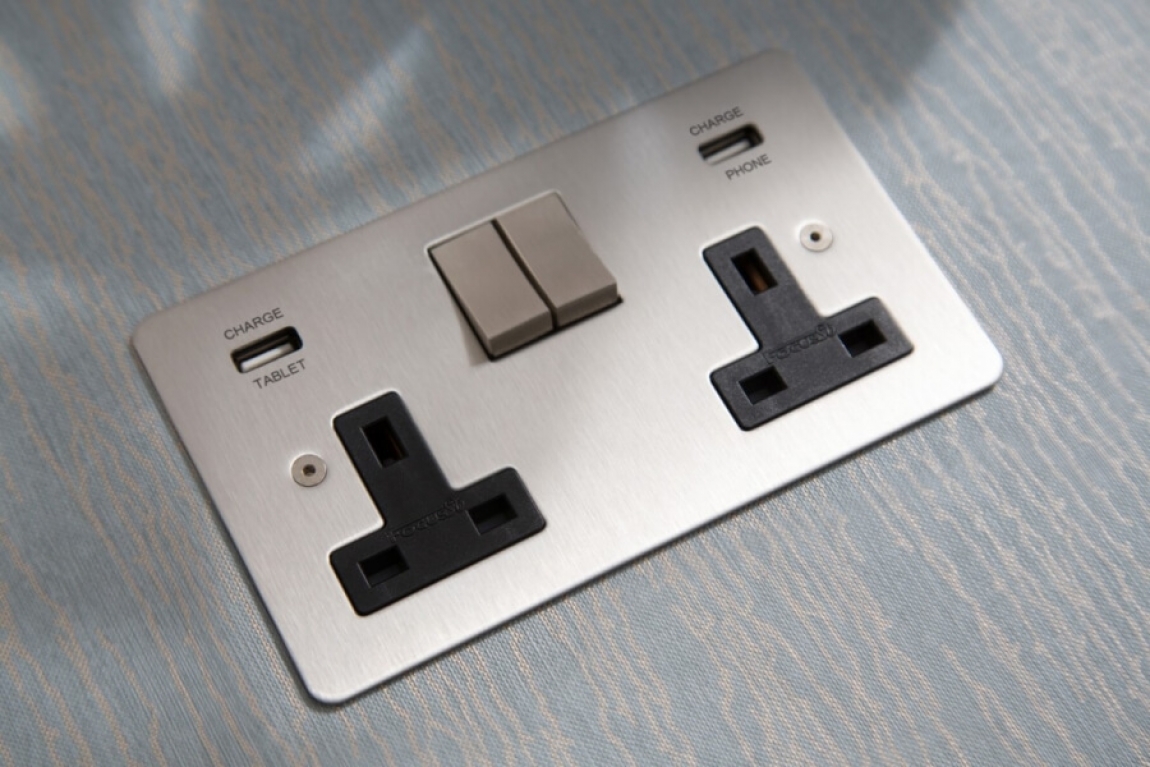Power sockets with integrated USB charging outlets are now the must have electrical accessory. Many are being included as standard on new builds and refurbishments, and can be found in airports and offices. In addition they can be retro fitted by replacing existing power sockets anywhere.
All great, but there are some things to think about before you make the change.
USB seems to have become the standard connection for charging all kinds of devices. The connection at the other end of your cable may change, but for now this is the default option for connecting to a charging source. This is almost certain to change at some point but for the foreseeable future USB is the preferred choice of:
- All modern phones
- Kindles and other reading devices
- Tablets
- Portable bluetooth speakers
- Bluetooth headphones
- Wearable tech, like GPS watches
- Fitness devices and wristbands
- Battery power banks
Before integrated USB charging sockets arrived, you needed a suitable 3 pin (in the UK) plug adapter to connect to a traditional power socket. A few years ago most devices were supplied with these, but this is not the case now. This is to reduce the manufacturing and distribution costs. They can be bulky and require larger packaging, but most importantly for manufacturers, items can be packed and supplied worldwide with the same contents in the box. Great for them but less convenient for us.
Integrated USB sockets are a great way to streamline device charging by getting rid of the adapters, saving you money and leaving the 3 pin power sockets free for other things. But what should you consider before going for the convenience of a wall socket with usb ports?
Performance
The most important factor when comparing USB charging sockets is amperage. Look for how many amps the outlets are rated at. Amps define the strength of the electrical current, or the strength of the flow. This is very important as devices such as iPads require a higher flow of electricity (amps) to charge effectively, typically 2.1 amps. Most 'phones on the other hand require only 1.0 amps. So you need to make sure the amperage for the USB sockets are rated at around 2 amps.
Most modern devices use 'intelligent charging' circuitry which means they will take the maximum amperage they can for optimum charging. This means you can safely plug a 'phone into a higher rated USB outlet, but if you plug a tablet, or any device requiring a higher charge rate, into a 1.0 amp socket it will charge extremely slowly and it may not even show that it is charging.
The big problem is many integrated USB double sockets advertise the rated amperage for both sockets combined. This is correct because the vast majority of these 'share' the amperage between the USB sockets. This is fine if you only ever plug in one device to charge.
The sockets sold online and in DIY stores (even from some reputable names) normally share 2 or 2.1 amps across both sockets. This means if you plug in a tablet or 'phone separately they will charge, but plug them in together they will both charge extremely slowly. Plug in two devices needing 2 amps and it will potentially take days and you will not be able to use the devices while they charge. Some of the cheaper options only share 1.0 amps - a complete charging disaster!
Solution
Look to purchase USB sockets that share a minimum of 3.1 amps, there only a few on the market, but they are worth seeking out if you want quick charging on multiple devices. Check the specification carefully though, some print 2.1 amps next to each socket but this is the total combined amperage. Better still purchase sockets with dedicated 1.0 and 2.1 amp sockets to ensure the fastest possible charge rate across all device types.

2.1 amps shared
By far the most common offering is 2.1 shared across 2 ports. Even on some of the more expensive options.

2.1 amps shared
The way the plates are marked looks like both ports charge at 2.1 amps, but they do not. Check the spec carefully.

Only 1.5 amps shared
At the lower end of the price range you only get 1.5 amps shared, tablets may charge but extremely slowly at this rate.






